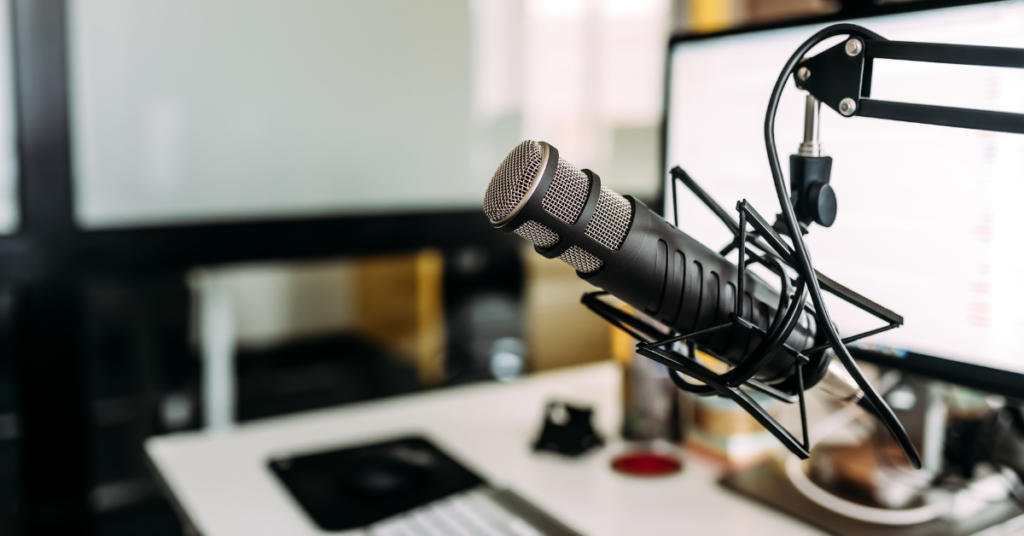Over the last few years, listeners have taken to podcasts like never before: from beauty influencers to authors and everyone in between, these audio interactions have taken the world by storm. And in the process, sparked the interest of marketers and brands wondering how to capitalise on the ever-growing audience to be found.
For a variety of brands, they are a great way to connect with your audience, promote your brand and reach new customers. So what makes a podcast successful? What’s important to consider? And what does success look like?
As the content marketing agency behind award-winning Shutter Stories: A Canon Europe Podcast, we’ve noticed a significant surge in brands looking to benefit from the surge in interest. Here, Future Fusion have collated the most-asked questions, and their tips for navigating to branded podcast success.
What content works best in a branded podcast?
Aim for thought leadership, not product marketing. Looking at the performance of branded podcasts, it’s clear that those with a heavy focus on marketing a product do not perform as well as episodes that avoid the hard sell in favour of relatable conversations and debates. A notable exception is when a new product of significance to the audience is announced. An episode on a product launch was our best-performing episode of Shutter Stories to date, indicating that when there’s enough interest, the audience will happily listen to product managers and Ambassadors talking about a product.
What does success look like?
Few podcasts share their data, but the most reliable benchmark to date comes from Libsyn’s official podcast The Feed – Episode 145, last June. This only looks at podcasts on Libsyn’s own platform but does give a good starting point for setting KPIs. According to this:
If your new episode gets within 30 days of its release:
- more than 136 downloads, you’re in the top 50% of podcasts
- more than 1100 downloads, you’re in the top 20%
- more than 3200 downloads, you’re in the top 10%
- more than 7,700 downloads, you’re in the top 5%
- more than 20,000 downloads, you’re in the top 2%
- more than 36,000 downloads, you’re in the top 1%
Another thing worth noting is that downloads can often rise and fall from episode to episode. So a more reliable measure of how your podcast is doing over time is subscriber numbers; which should increase steadily. If they aren’t, you’re doing something wrong. (Note, though, that they can be difficult to measure accurately.)
Focusing on raw numbers, however, misses the point about what makes podcasts unique. Listening to a podcast is a much greater commitment than clicking on a link or Like button, and creates a much more intimate relationship between the two parties. Therefore, podcasts are worth doing even if they don’t have large audiences.

How much control can you have on a branded podcast?
Shaping the outcome of the podcast starts even before the episode’s guests are confirmed. Research the background of potential participants, speak to them on the phone to identify what they are likely to say on the topic of the episode and use this knowledge to decide on a combination of guests that will spark interesting conversations.
By sending the host and guests a thorough brief with background information on the guests and a list of questions or topics you’d like them to cover, everyone gets a chance to formulate thoughts and ideas to bring to the conversation, and to familiarise themselves with the work and background of the other guests. This makes guests more confident and likely to speak up.
What’s the best number of guests?
We find that in a remote recording format, a host and two guests is the ideal number of participants; any more guests and people tend to wait their turn to speak rather than engage naturally in conversation.
How can you troubleshoot sensitive topics?
A podcast naturally allows for more free-flowing conversation than an article, which can present a challenge for brands not wanting to touch on certain issues. Anticipating potential risky topics ahead of a podcast recording means you can add a list of things to bear in mind when briefing the host and guest. This will also help the member of your team monitoring the recording to react in time to ask for a retake when sensitive topics come up.
What is the best frequency?
There’s no ideal podcast frequency, everyone in podcasting seems to agree. Successful podcasts can be daily, thrice-weekly, weekly, fortnightly, monthly, or at a variety of other intervals. The most important thing is to be consistent. Future Fusion’s Shutter Stories: A Canon Europe Podcast maintains a fortnightly schedule.
An argument can be made that either daily or weekly is best for building a listening habit – every morning commute, or every Friday evening. However, it’s far more important that there’s enough content to fill these intervals: if not, the podcast is too frequent!
What is the best length?
There’s no ideal podcast length, but according to The Audacity to Podcast, podcast episodes average around 1–15 minutes (daily), 15–60 minutes (weekly), 60 minutes (fortnightly) and 60–90 minutes (monthly). It’s rare for any podcast to last over two hours.
There are no hard and fast rules but, in general, daily podcasts tend to be shorter and less frequent podcasts are longer. But on the whole, audiences seem happy with inconsistency in length, as long as the content justifies it. At Future Fusion, we take the approach of varying length according to what the content warrants – a product launch episode may be longer, for example.
Top tips for better audio quality when recording remote podcasts
Remote recording a group of people can add diversity and flexibility, but at the same time losing the control and certainty of the studio adds challenges. Here are some immediate ways to ensure better audio quality:
- Ensure the host has a quality podcast mic
- Spend the first 5 minutes of each session sound-checking guests for optimum audio quality
- Always record on a laptop, rather than a phone
- Ensure guests wear headphones rather than use their laptop speakers
- Turn video off to give as much bandwidth to the audio channels on Zoom as possible
- Ask your guests to record in a room with soft furnishings, or use pillows to absorb sound reflections
- Ask your guests to position themselves in the centre of the room
- Ask your guests to use a USB microphone, when possible
- If the guest is able to record what they’re saying on a separate device, it will ensure good audio quality even if there is a problem with the main recording.
Find out more about our award-winning podcast in this case study.
By Jeff Meyer
I work for Future Fusion, the content marketing arm of Future PLC. We are experts at building communities around people’s passions and in doing so positioning brands at the heart of incredible content that drives transformative results.We publish a monthly newsletter with the latest trends in content marketing. You can sign up here if you’d like to be kept informed – Future Fusion monthly email.






